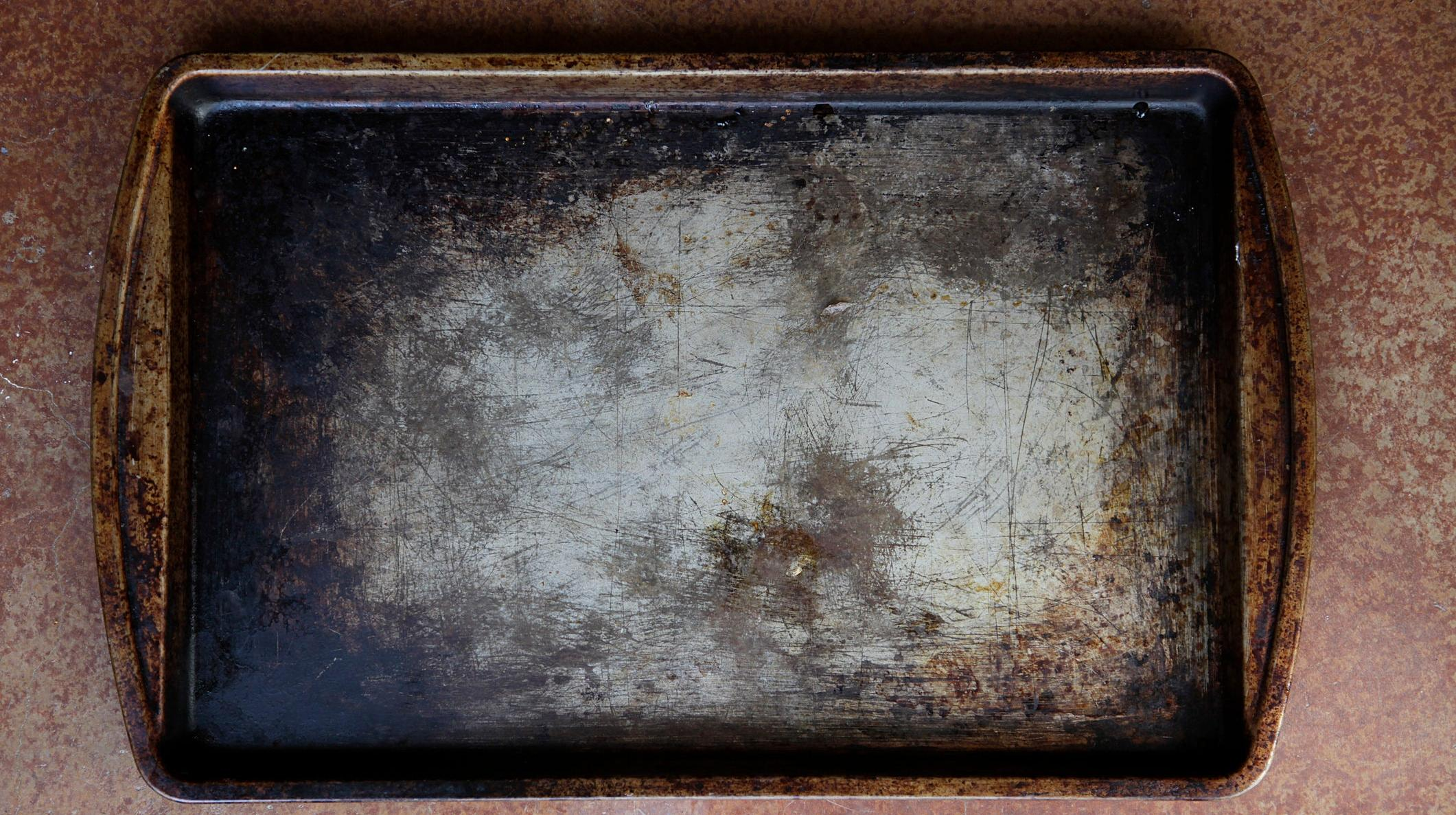Keep One Absolutely Disgusting Pan In Your Kitchen
In praise of grungy baking sheets and all the cooking that got them there.
I keep my nice things nice, to the point where you could say it's a problem. Example: I used my half-broken headphones for a whole year because I didn't want to unwrap the pristine new pair I'd bought to replace them. And I always bake cookies on a parchment-paper-lined pan, not to control for the bottoms of the cookies, but to control for the pan itself: I want to keep it looking as shiny as the day it came home. Despite my desire for tidy order in all things, I've made one important concession that I'd recommend to anyone. You must embrace the One Gross Pan in your home. Do so, and you will be set free.
I'm talking about a metal sheet pan, not a cast iron skillet. Seasoning the latter is a little different—read more about that here. A grubby baking sheet, meanwhile, is a must-have: This is the pan that you will inadvertently season through years of accidental scorching and high-temp roasting. You'll use it to collect the drips from your oven-cooked bacon. You will continue to wash it after each use, of course, but your washings will eventually be no match for the color of the pan as it transitions from shiny silver to cloudy bronze to a caramel brownish black. Only when you abandon hope of restoring its factory gleam can you know inner peace.
You simply won't get the same char on roasted broccoli or cauliflower if you're lining your pans with aluminum foil to keep the messy oil, salt, and pepper from touching the surface. You don't even need a broiler to get good color on those vegetables: simply preheat the oven to 425 degrees with the pan already inside. That way, once it's up to temp, the oiled-up veggies can hit the pan with a sharp sizzle and begin cooking away the moment you prepare them for the oven.
But the utility of a grubby all-purpose pan extends beyond the functional. A gross baking sheet is, in many ways, a state of mind. We all know by now that various combinations of vinegar and baking soda and Bar Keepers Friend and lemon juice and steel wool and elbow grease can restore dirty pans to their former glory—stories with headlines like "Watch this grimy cookware become SPOTLESS!!!" comprise roughly half the internet in 2021, replete with tantalizing before-and-after visuals of the formerly offending pans. So, yes, it's possible to undo what has been done to your stained, blackened cookware. But for those who feel pressured to keep flawless kitchens, we hereby give you permission to allow yourself at least one pan that flies in the face of Pinterest perfection, a humble kitchen tool that gets the delicious job done without an ounce of Instagrammability.
It's the tiniest rebellion, surrendering to the collateral damage of the Maillard reaction. Don't blow through all your baking soda trying to bring back a gleam that has faded—it's been dulled by years of nourishing meals. Keep that baking soda on hand to make Pretzel Pierogi instead.
